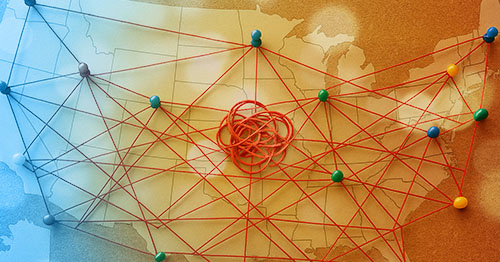
Will Your eDiscovery Processes Still Work in the New Microsoft Purview UI?
July 1, 2025
By:
Summary: The new Microsoft Purview eDiscovery interface introduces big changes that affect how legal, compliance, and IT teams perform searches, holds, and data exports. This overview explains changes, from new naming conventions to more reporting options, to help you make process adjustments that increase efficiency and maintain defensibility. Note: The information provided is based on available features as of the date of publication and is subject to change.
Lighthouse’s Purview experts recently presented a webinar, M365 Academy – Purview Reimagined: What the New eDiscovery UI Means for You, identifying the changes in the Microsoft Purview eDiscovery interface. And they are extensive. They include naming conventions, structural changes, new reporting capabilities, revised export options, and more. This blog provides an overview of the UI changes discussed in the virtual session.
Terminology changes

Microsoft has updated key terms in the Purview eDiscovery interface. While many might agree that these terms better reflect how modern data is stored and collected, others could argue that making a unilateral decision to change longstanding terms with legal precedent has the potential to create issues.
- “Custodians” are now referred to as “People.”
- “Non-custodial sources” are now “Groups.”
Deprecated functionality
Several legacy components of the eDiscovery experience have been phased out to streamline workflows and increase security. Changes such as enforcing case-based searches, browser-based exports, and limiting export destinations reduce the risks of data exposure and support auditability.
- Classic Premium eDiscovery interface will be fully deprecated by August 2025, “Show both experiences” must be enabled for continued, interim access.
- The Classic Standard eDiscovery interface has already been removed.
- The eDiscovery Export Tool is deprecated. Downloads must now be performed via a web browser.
- Export to customer-owned Azure storage (via SAS token) is no longer supported. Microsoft identified this feature as a data exfiltration risk.
- Condensed Directory Structure (CDS) export format is deprecated but can be approximated using available export settings.
- Deduplication options previously available in the export tool are no longer available. This change supports chain-of-custody and transparency.
- Legacy content searches are retired and grouped under a new case type called “Content Search.”
- Legal hold communication and notification functionality are currently removed. Microsoft has informed partners that these features may return in a redesigned form.
Highly requested or helpful improvements

The updated Purview interface introduces several features that address legal, compliance, and IT teams’ long-standing pain points. These features streamline multi-step processes, make it easier to scope collections, and provide net-new reporting and audit capabilities.
- Unified interface for all eDiscovery tasks with significantly fewer clicks and a more intuitive, modern experience.
- Advanced indexing now runs automatically when a search is performed, ensuring up-to-date and complete indices are used in the search. This change significantly improves wait time.
- The search-and-hold condition builder is more intuitive. Users can define search and legal hold parameters in a single step.
- “Run Query” button has been added to search and review interfaces to eliminate confusion and provide a more familiar search experience.
- The ability to cancel in-progress jobs, including search and export, allows for more immediate corrections.
- New reporting capabilities:
- Keyword hit breakdowns
- Sensitive information type reporting based on Purview classifications
- Participant communication metrics
- Exportable, shareable CSVs for audit and collaboration between IT and legal
Structural changes
Some of the UI changes don’t include new features; instead, Microsoft has changed how core components of the eDiscovery workflow are organized and connected. These include enhanced search scoping and a one-and-done data source definition capability.
- "Add Data Sources" tab is restored, allowing users to define people/groups once and reuse them across searches, reinstating efficient workflows.
- Hold functionality is now accessed via a single interface which encourages more deliberate and thoughtful configuration.
- Search and data source lookups now leverage Microsoft Entra attributes (e.g., frequent collaborators, group memberships).
Review, export, and reporting enhancements
The newest version of the Purview eDiscovery interface brings the tool closer to parity with traditional eDiscovery platforms and addresses workflow and reporting gaps.
- Search tab replaces “Collections”:
- More dynamic results
- Can be regenerated to reflect new sources or criteria
- New “Items Report” replaces traditional CDS load file:
- Includes file-level details, locations, and export settings
- Improves defensibility and downstream processing workflows
- Direct Export workflow (search → export without review set) is now fully supported and mature.
Adapting to the new Purview eDiscovery experience requires more than learning a new interface. It calls for updated workflows and careful alignment with legal and IT requirements. Lighthouse’s experienced Purview consultants can help your team navigate these changes efficiently while optimizing configurations to ensure defensible and effective eDiscovery processes.
Need help? Contact us today.








